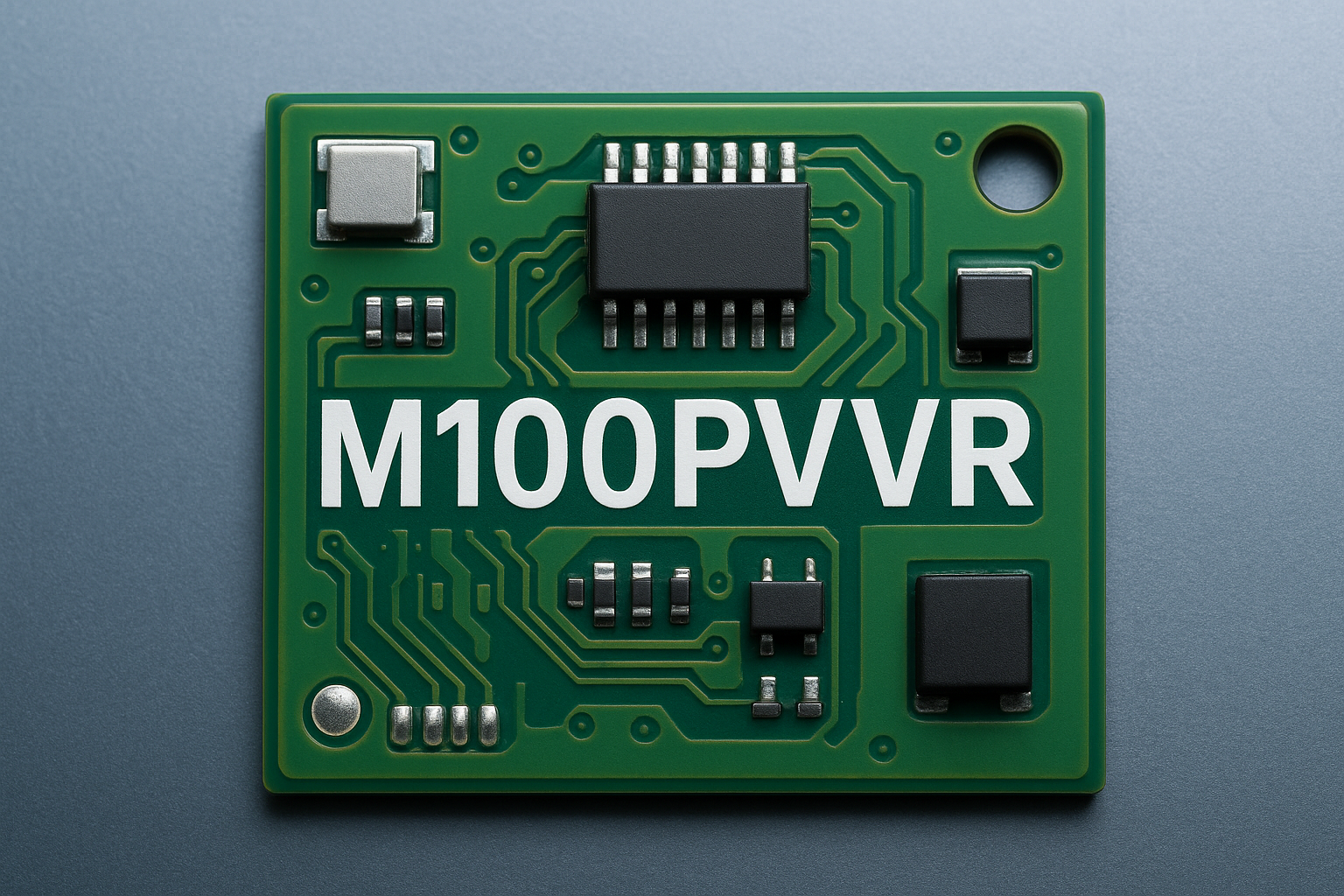M100PVVR: Comprehensive Guide to Specifications, Applications, Benefits, Maintenance, and Future Prospects of This Advanced Technological Component
The term M100PVVR may appear at first glance to be a simple combination of letters and numbers, but in specialized technical, industrial, and scientific contexts, it represents a highly significant product designation, model number, or system classification. It is used in various industries ranging from electronics and manufacturing to research and development, and sometimes even in highly specialized fields such as aerospace or renewable energy systems.
Understanding the meaning, purpose, and functionality of M100PVVR is essential for professionals who work with advanced technology and engineering solutions. The designation could represent a machinery part, a digital module, a sensor, or even a hybrid mechanical-electronic device, depending on the manufacturing company and industry application. This article will explore M100PVVR in depth, covering its technical attributes, uses, advantages, maintenance guidelines, and its potential role in future technology landscapes.
Technical Overview and Structure of M100PVVR
The alphanumeric sequence M100PVVR often follows a standardized naming convention used by manufacturers to indicate model type, series, and variant. While the specific meaning of each character depends on the company’s internal coding system, a plausible breakdown might be:
-
M100: Refers to the main series, model capacity, or baseline configuration of the product.
-
PVVR: Could represent a unique proprietary technology, a design variant, or functional capabilities such as “Pressure-Voltage Variable Regulator,” “Precision Variable Voltage Receiver,” or another industry-specific term.
From a design standpoint, M100PVVR could feature:
-
A compact yet durable housing made from corrosion-resistant alloys or reinforced polymers.
-
Integrated circuits for control, monitoring, and communication.
-
Modular interfaces for easy system integration.
-
Heat dissipation systems to ensure operational stability under heavy workloads.
The actual size, weight, and physical design of M100PVVR vary according to its purpose. For example, in an electronics context, it might be a small circuit board. In manufacturing machinery, it could be a larger mechanical-electrical assembly.
Applications of M100PVVR Across Industries
The flexibility of M100PVVR allows it to be utilized in multiple industrial and technological areas. Here are some key applications:
Manufacturing and Automation Systems
In modern automated factories, M100PVVR could be used as a control module or precision actuator within production lines. It may help regulate machine performance, monitor operational variables, and ensure that assembly processes meet strict tolerances.
Electrical and Electronic Systems
When applied to electronics, M100PVVR could function as a voltage regulator, signal processor, or data acquisition unit. It may play a crucial role in ensuring stable power distribution, accurate measurement, and consistent performance of connected devices.
Renewable Energy Solutions
In renewable energy systems such as solar or wind farms, M100PVVR might be integrated into power conversion units to optimize the transformation of generated energy into usable electricity while maintaining efficiency and safety.
Research and Development Laboratories
R&D teams might use M100PVVR for prototype testing, experimental monitoring, and data recording. Its precision and adaptability make it suitable for both academic research and commercial product development.
Automotive and Aerospace Engineering
In automotive systems, M100PVVR could be part of engine management or safety monitoring systems. In aerospace, it might be used for onboard diagnostics, control of electronic subsystems, or real-time data communication between components.
Advantages and Benefits of M100PVVR
There are several advantages that M100PVVR offers, depending on its industry application:
-
High Reliability: Built to operate in challenging environments with minimal failure rates.
-
Precision Performance: Delivers highly accurate results and maintains stability under varying load conditions.
-
Compatibility: Designed to integrate seamlessly into a wide range of systems, reducing installation complexity.
-
Scalability: Available in multiple configurations to meet the needs of small-scale and large-scale operations.
-
Energy Efficiency: In applications like electronics or power systems, it helps reduce waste and improve operational efficiency.
These features make M100PVVR a valuable asset in modern technological solutions.
Maintenance and Care Guidelines for M100PVVR
Like any advanced technological component, M100PVVR requires regular maintenance to ensure optimal performance. Key maintenance practices include:
-
Routine Inspection: Regularly checking physical condition, connectors, and mounting points to identify potential wear or damage.
-
Cleaning Procedures: Removing dust, debris, or corrosion from surfaces and electrical contacts.
-
Calibration and Adjustment: Ensuring that sensors, voltage levels, and performance parameters are within manufacturer specifications.
-
Software and Firmware Updates: If M100PVVR includes programmable features, keeping its software updated ensures compatibility with evolving systems.
-
Environmental Protection: Using protective casings or enclosures when M100PVVR operates in extreme temperatures, high humidity, or chemically active environments.
By following these guidelines, the lifespan of M100PVVR can be extended significantly, while performance remains consistently reliable.
Common Challenges and Troubleshooting
Even though M100PVVR is designed for reliability, certain challenges can arise, including:
-
Connection Failures: Due to loose or damaged connectors.
-
Overheating: If ventilation or cooling systems are obstructed.
-
Signal Interference: Particularly in electronic applications with high electromagnetic noise.
-
Calibration Drift: Gradual loss of precision requiring recalibration.
Troubleshooting typically involves checking power supply stability, inspecting wiring, updating software, and performing manufacturer-recommended diagnostic tests.
Future Prospects and Technological Evolution of M100PVVR
As industries continue to move toward automation, smart technology, and sustainable solutions, the role of M100PVVR is expected to grow. Potential future developments include:
-
Integration with IoT (Internet of Things): Allowing M100PVVR to communicate in real time with other connected devices for improved efficiency.
-
Artificial Intelligence Enhancements: Using AI algorithms to optimize performance and predict maintenance needs.
-
Miniaturization: Making M100PVVR smaller while maintaining or improving performance capabilities.
-
Sustainable Materials: Using eco-friendly materials in its construction to reduce environmental impact.
The next generation of M100PVVR models may deliver even higher performance, better energy efficiency, and expanded compatibility with emerging systems.
Read also: The Life, Career, and Impact of Shannon Reardon Swanick
Conclusion
The M100PVVR is more than just a combination of letters and numbers—it represents an advanced, adaptable, and highly reliable component in today’s fast-evolving technological environment. From manufacturing and electronics to renewable energy and aerospace, its potential applications are vast. By combining durability, precision, and versatility, M100PVVR continues to serve as a cornerstone in the integration of high-performance components into complex systems.














Post Comment